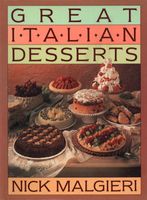Save 25% on ckbk Premium Membership with code FALLFLAVORS 🍁
Mostaccioli
Published 1990
Though the name of these southern Italian and Sicilian Christmas cookies would seem to derive from mosto, or “must,” the unfermented juice of grapes that is made into wine, it actually comes from the late Latin mustaceum, a type of cake baked in leaves that was served at weddings and fertility rites. Mentioned by Cato in his De agri cultura, the cake is described as a mixture of rye flour, anise, cumin, cheese, and eggs, wrapped in leaves of mustace, a type of laurel.
Modern versions are usually made from a mixture of flour, honey, ground almonds, and spices, resulting in hard biscuits that are aged to soften them. In the Basilicata, there is a chocolate version flavored with cocoa powder, and Neapolitan mustacciuoli are covered with a chocolate icing.
Become a Premium Member to access this page
Unlimited, ad-free access to hundreds of the world’s best cookbooks
Over 160,000 recipes with thousands more added every month
Recommended by leading chefs and food writers
Powerful search filters to match your tastes
Create collections and add reviews or private notes to any recipe
Swipe to browse each cookbook from cover-to-cover
Manage your subscription via the My Membership page
In this section
Part of
Advertisement
Advertisement


